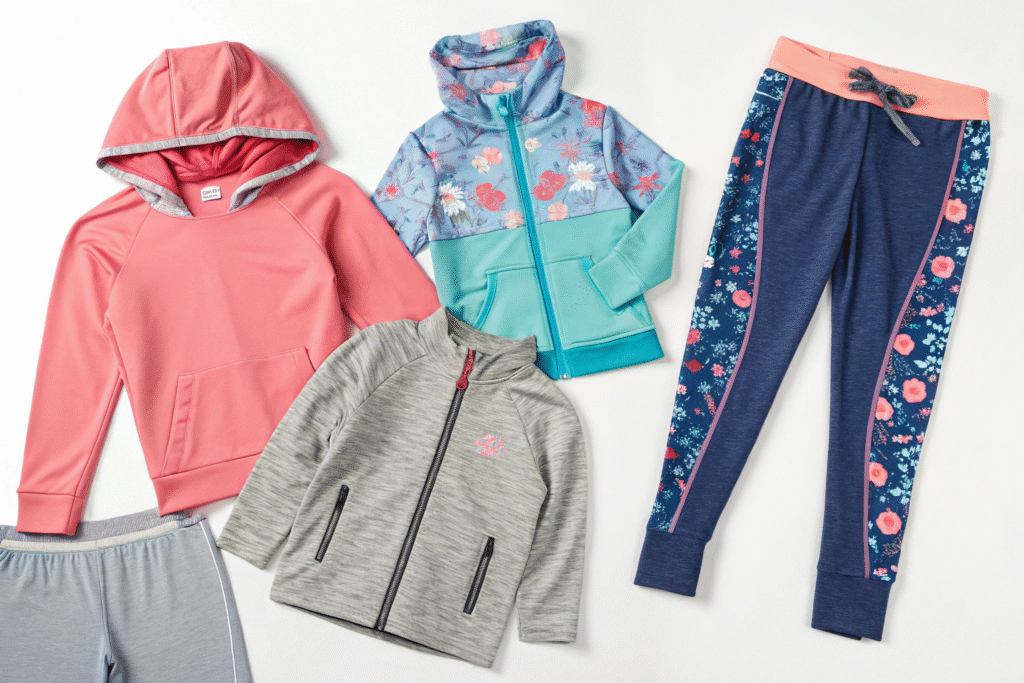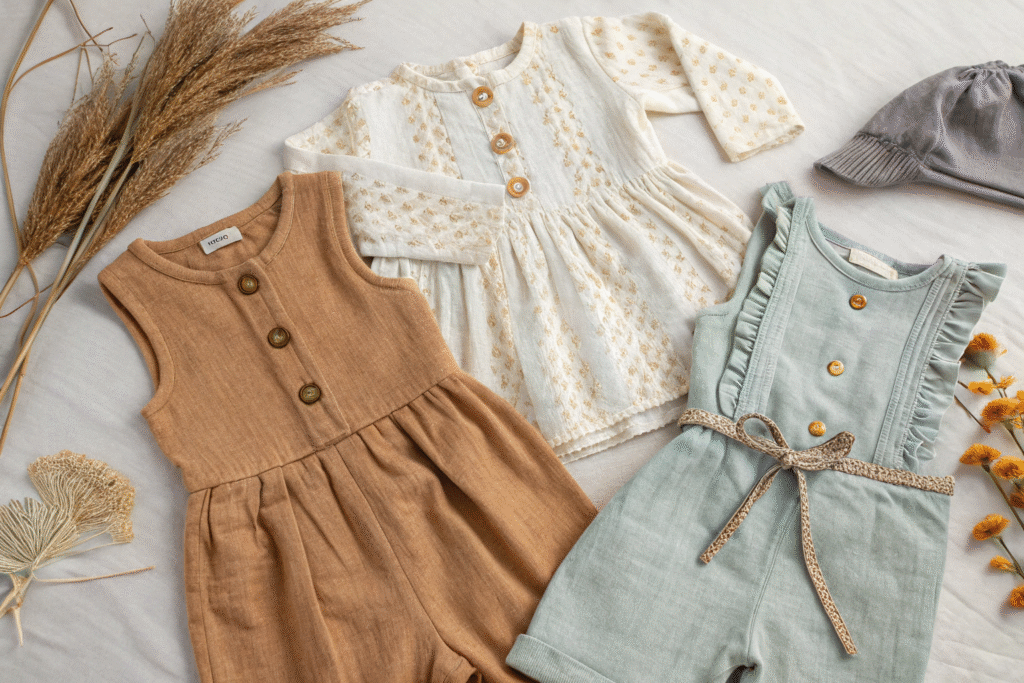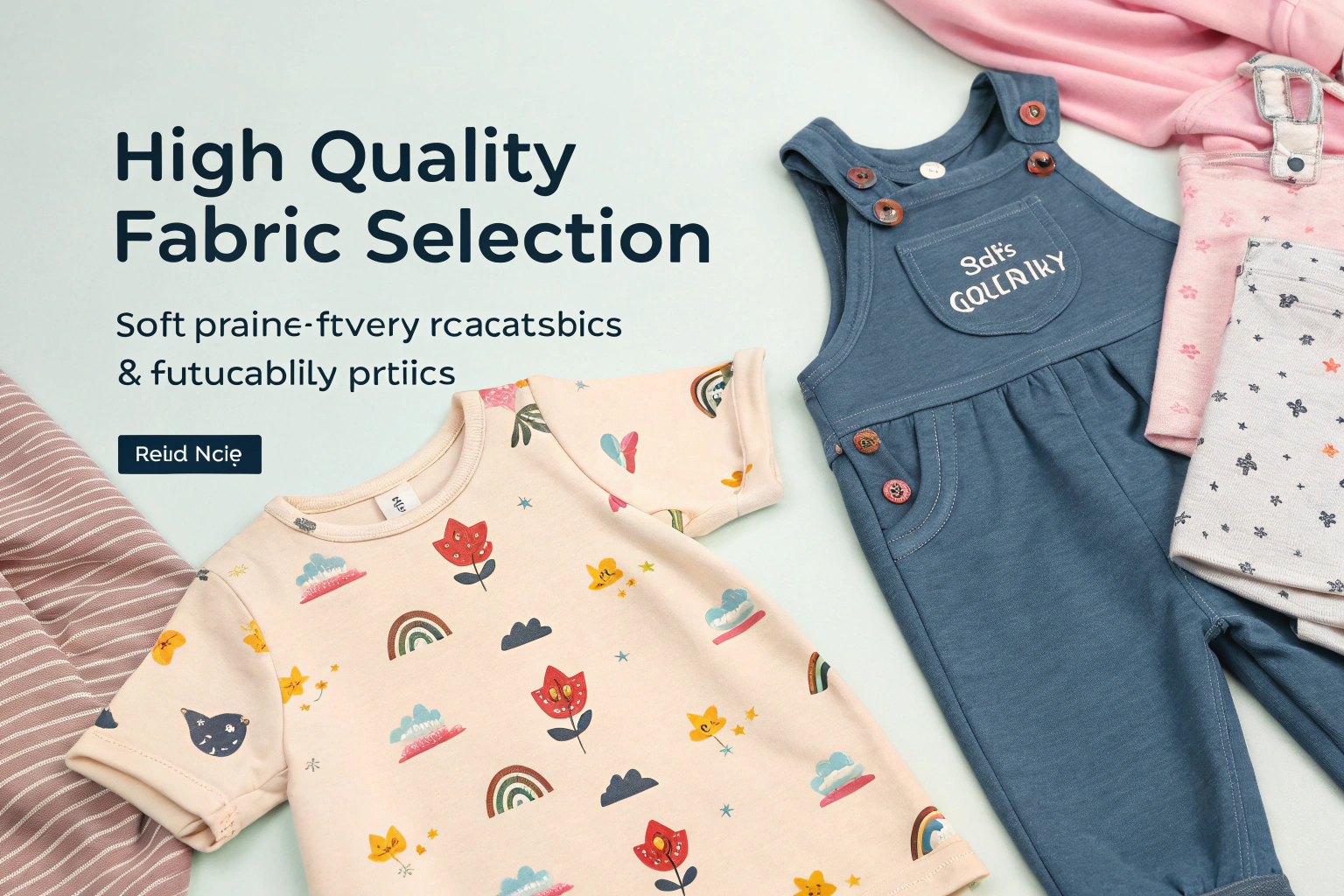The world of children’s fashion is evolving rapidly. Today’s parents aren’t just looking for cute prints or trendy styles—they’re increasingly concerned about fabric quality, skin-friendliness, and functionality. As a manufacturer specializing in USA, I’ve seen firsthand how fabric selection shapes everything from comfort to sales performance.
The right fabrics create a lasting impact—not just on how a garment looks but on how it feels, wears, and sells. Whether it's breathable cotton for toddlers or wrinkle-resistant knits for active kids, the textile foundation matters more than ever. Brands that choose the right fabric partner are already winning more customer loyalty and fewer returns.
In this article, I’ll break down key modern fabric options that suit both girls’ and boys’ ready-to-wear collections. We'll explore what's trending globally, what materials are preferred by premium buyers, and how factories like ours support the technical side of choosing the perfect cloth.
What Are the Most Comfortable Fabrics for Kids’ Daily Wear?
The daily wear market demands a mix of durability, skin sensitivity, and easy care. With children’s active lifestyles, we often recommend fabrics that balance comfort with practicality—especially for clients who sell online and get immediate customer reviews.

Why Is Cotton Still the Most Trusted Base Fabric?
Cotton remains unbeatable for most daily-use categories. Not only is it hypoallergenic and breathable, but it also dyes easily and withstands multiple washes. American and European buyers still favor it for everything from tees to bodysuits.
According to Cotton Incorporated and Oeko-Tex® certifications, cotton is also the most certified natural fiber in children’s clothing. When we produce for premium brands, they often request GOTS-certified cotton to meet eco-conscious buyer expectations.
Is Modal Better Than Cotton for Softness?
Yes, and we’re seeing modal and cotton-modal blends rise in popularity. Modal offers an ultra-soft feel with excellent moisture absorption, making it ideal for baby rompers, pajamas, and close-to-skin garments.
Retailers such as Hanna Andersson and Primary.com use modal-rich blends in their collections. The added drape and silky finish elevate perceived quality and command better prices online.
Are Functional Fabrics Gaining Ground in Kidswear?
Absolutely. With the rise of sportswear aesthetics and hybrid casual fashion, functional fabrics like poly-spandex, jersey knits, and even technical weaves are becoming mainstream in children’s apparel.

Are Stretch Fabrics Ideal for Boys’ Activewear?
Yes—stretch equals freedom. Boys’ joggers, tees, and shorts now widely use blends like 95% cotton + 5% spandex or polyester + elastane. These combinations allow garments to move with the body while keeping their shape.
Brands like Cat & Jack and Nike Kids increasingly request 4-way stretch fabrics for children’s lines, and we supply these in custom weights from 160gsm to 260gsm.
Do Wrinkle-Free or Stain-Resistant Fabrics Work for Kids?
Yes. Performance-treated fabrics like Teflon-coated cotton and quick-dry polyester are especially popular with schoolwear and travelwear collections. They minimize ironing and allow fast laundering cycles.
We help clients integrate finishes like anti-pilling, easy-care, and fade resistance—services that set their SKUs apart on marketplaces like Amazon and Zalando.
What Are the Best Fabric Choices for Seasonal Collections?
Every season demands thoughtful material planning. Lightweight summer dresses need airflow; winter hoodies need insulation. Our design team often collaborates directly with clients on fabric strategy by season.

What Works for Spring-Summer Girl's Collections?
Linen blends, lightweight cotton voile, and rayon challis are excellent for spring-summer. They keep the skin cool, absorb sweat, and allow bold prints. Girls’ dresses and shorts are especially suited to these fabrics.
Retailers like Tea Collection use rayon for its flowy drape and soft touch. Our factory pre-washes all rayon-based garments to avoid shrinkage issues common in fast fashion.
Which Fabrics Are Ideal for Winter Boys' Layers?
Fleece-backed knits, interlock cotton, and double-sided French terry provide both insulation and flexibility. These fabrics are widely used in winter jog sets, hoodies, and thermal layers.
European buyers from colder markets request brushed finishes for interior softness, and we offer special yarns treated for pilling resistance. As referenced by Textile Exchange, synthetic-natural blends offer top performance without bulk.
How Do Certifications and Testing Support Fabric Credibility?
Choosing the right fabric is one thing—proving its quality is another. For global brands, certification and testing protocols are non-negotiable. We provide full QC reporting and compliance assurance on every fabric batch.

What Certifications Matter Most for Children’s Apparel?
For export to the U.S. and Europe, Oeko-Tex® Standard 100, GOTS, and REACH are essential. These ensure no harmful chemicals, AZO dyes, or restricted substances are used.
Our lab partners like SGS and Intertek perform third-party verification. Many of our clients use these certificates during their customs clearance and retail listing processes.
How Do Brands Use Testing to Build Trust?
Product claims such as “wrinkle-resistant” or “fade-proof” need lab-backed proof. We provide colorfastness testing, seam stretch reports, and shrinkage analysis to help clients support their marketing claims.
Buyers often include technical spec sheets in their online product listings, especially for platforms like Faire and RangeMe, where B2B trust is built on transparency.
Conclusion
Fabric is the invisible hero of children’s wear. It affects how kids feel, how clothes last, and how brands perform. By understanding the modern fabric landscape—from certified cotton to wrinkle-free performance blends—buyers like Ron can offer better quality, faster-moving SKUs, and fewer customer complaints.
At Fumao Clothing, we’re proud to be fabric consultants, not just clothing makers. We help you choose right, test thoroughly, and deliver quickly.










